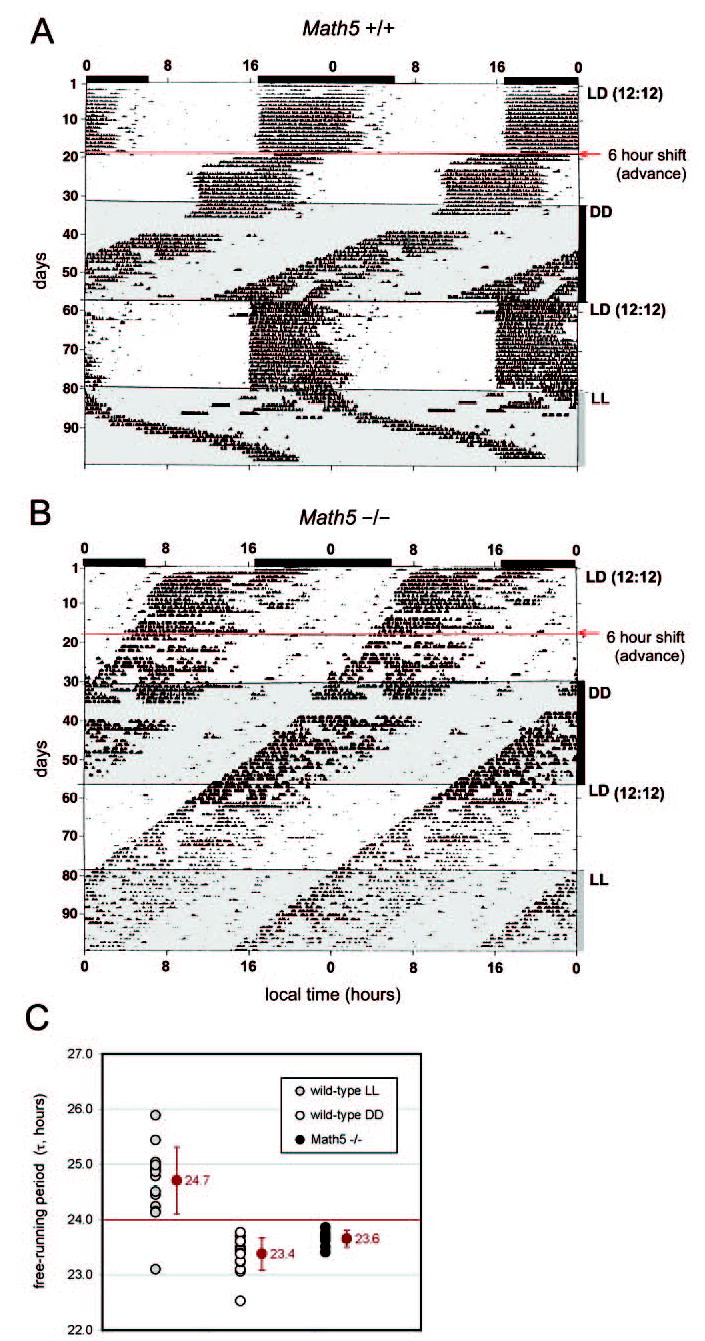Figure 1.

Math5-null mice exhibit free-running circadian behavior. Actograms show wheel-running behavior for representative Math5+/+ (A) and Math5−/− (B) mice. Local clock time is double-plotted across the horizontal axis with the light stimulus indicated. The amplitude of the tick marks shows the intensity of wheel-running activity. The data were recorded during a single 100-day experiment, as indicated on the vertical axis. (A) Wild-type mice had wheel-running patterns that started and finished at the same clock time each day under LD conditions and were therefore photoentrained. When the LD cycle was advanced 6 hours, wild-type mice entrained to the new cycle within a few days, advancing their behavior by 6 hours. In constant darkness (DD), the wild-type mice were free-running with a 23.4-hour period (n = 17). On returning to LD, the mice were re-entrained, with a 24-hour period. In LL, the mice were free-running with a 24.7-hour period (n = 17). (B) Math5−/− mice were free-running under all light conditions, with a 23.6-hour period (n = 7). They resembled wild-type mice in DD. Their SCN clocks were intrinsically normal but did not photoentrain. (C) Free-running periods for each animal under DD and LL conditions, with the group averages ± SD (red). LD, 12 hours light-dark.
